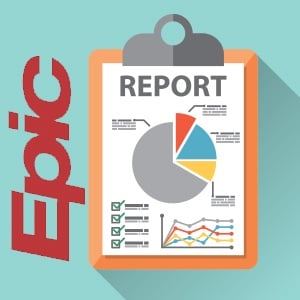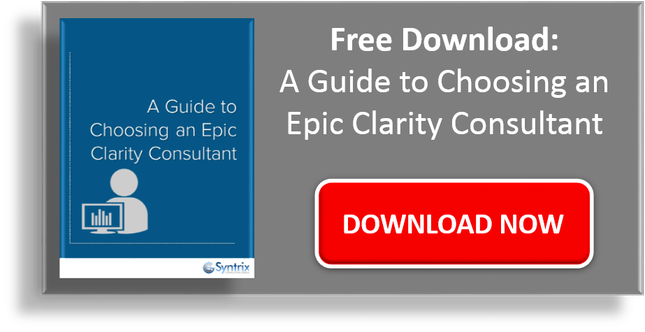 At Syntrix Consulting Group, one of the key ways that we assist healthcare organizations and medical practices optimize their Epic EMR systems is by helping them take full advantage of Epic’s built-in reporting capabilities.
At Syntrix Consulting Group, one of the key ways that we assist healthcare organizations and medical practices optimize their Epic EMR systems is by helping them take full advantage of Epic’s built-in reporting capabilities.
We’ve provided an overview of 4 of Epic’s powerful report options:
1. Application Reports
Application or Hyperspace Reports are integrated into the Epic application and are utilized by staff as part of the system’s workflow. These are generally customized by the application analysts or builders. Application Reports are somewhat standardized, and do not allow for significant customization. Other Epic report types are more versatile and suitable when a customized report or analysis is required.
2. Reporting Workbench
Reporting Workbench (RWB) reports are essentially “real-time,” operational reports, or “snapshots” of current data. For example, a list of current patients meeting a specific criteria -- all patients on restraints. Users gain access to these reports under their “My Reports” or “Library” tabs. Report distribution and modification privileges can be controlled (and limited) based on security configurations, e.g. by user role or by person. Epic provides a variety of templates and standard reports that can be customized to meet an organization’s specific parameters.
3. Clarity Reports
Clarity reports are suitable for analytical reporting needs, to present or aggregate data across time -- for example, a year-to-date analysis. A report writer or consultant with Clarity or SQL/Crystal experience is needed to create Clarity reports. The reports are run on a separate server, not impacting the operational performance of the production application servers. A daily ETL (extract, transform and load) process is used to extract data from Epic Chronicles, transform and load it into a relational database. Due to this process, the data available for Clarity reporting is always a day behind.
4. Radar Dashboards
Radar dashboards provide end users with a quick, summarized view of key, aggregated data. In general, data is presented visually, using graphs, charts and summarized reports. Dashboards can be customized by work group or stakeholder. Although Radar dashboards are not technically a report type, it is a method for turning data into actionable intelligence.
Getting the Most Out of Epic Reports
At Syntrix Consulting Group, our consultants are Epic certified and have years of hands-on experience with virtually every Epic application. When it comes to Epic reporting, we thoroughly understand what works – and just as importantly, what does not work!
Our proprietary healthcare business intelligence system, Smart Medtrix™, offers pre-built healthcare dashboards that let you start analyzing your clinical and financial operations without delay. Our dashboards allow you to keep an eye on the big picture and focus on what matters most.
To learn more, contact us today!
If you're interested in more information, download our FREE resource below on how to choose an Epic Clarity Consultant!
